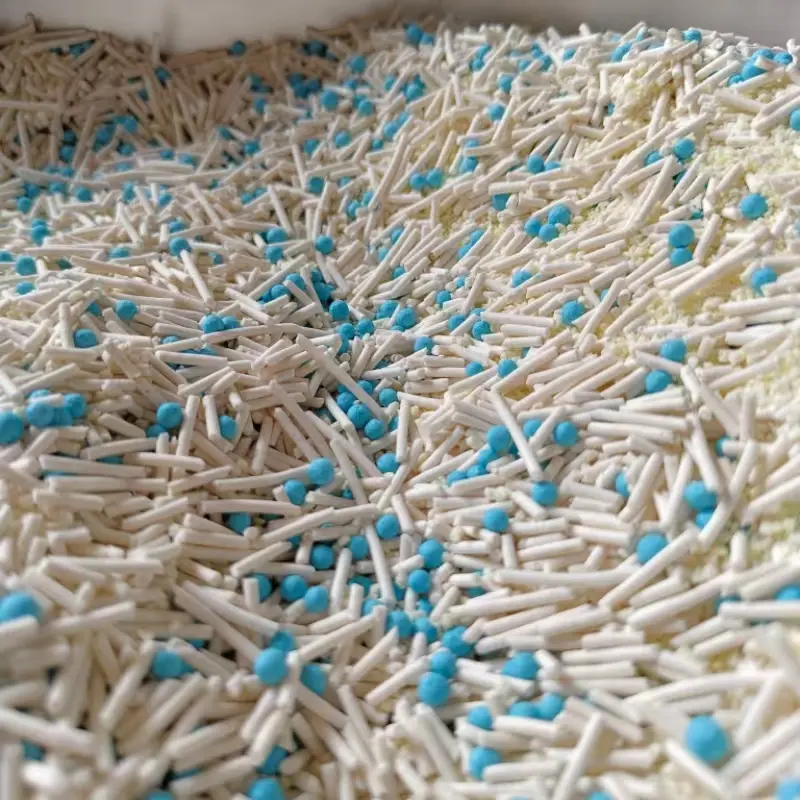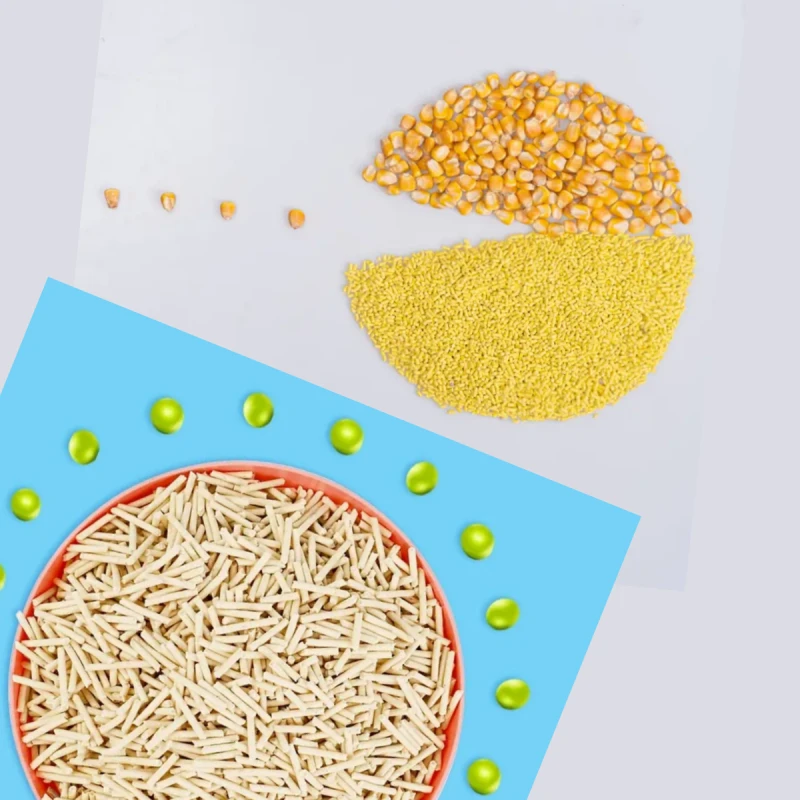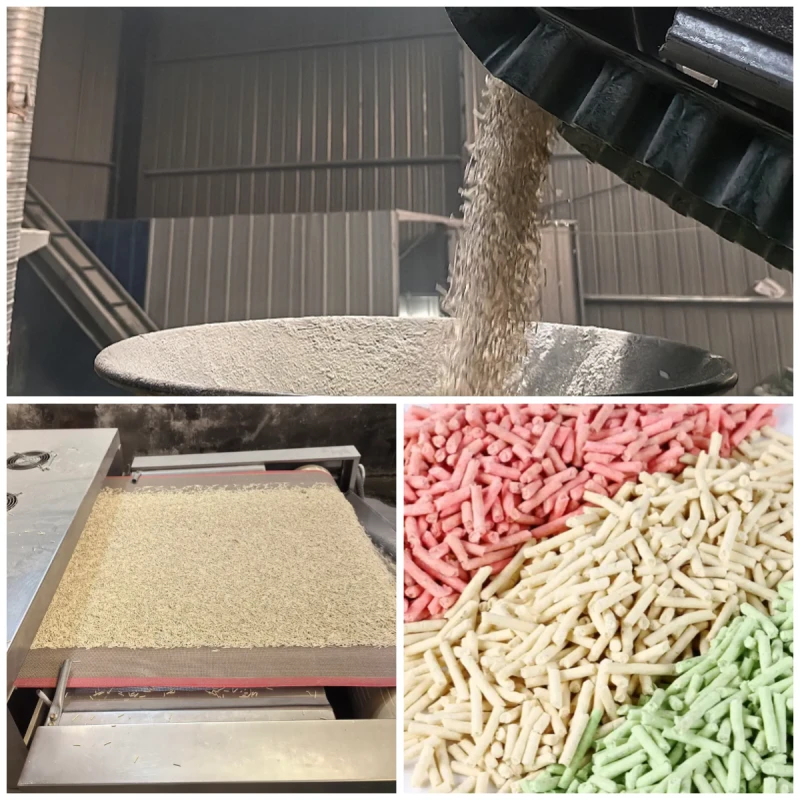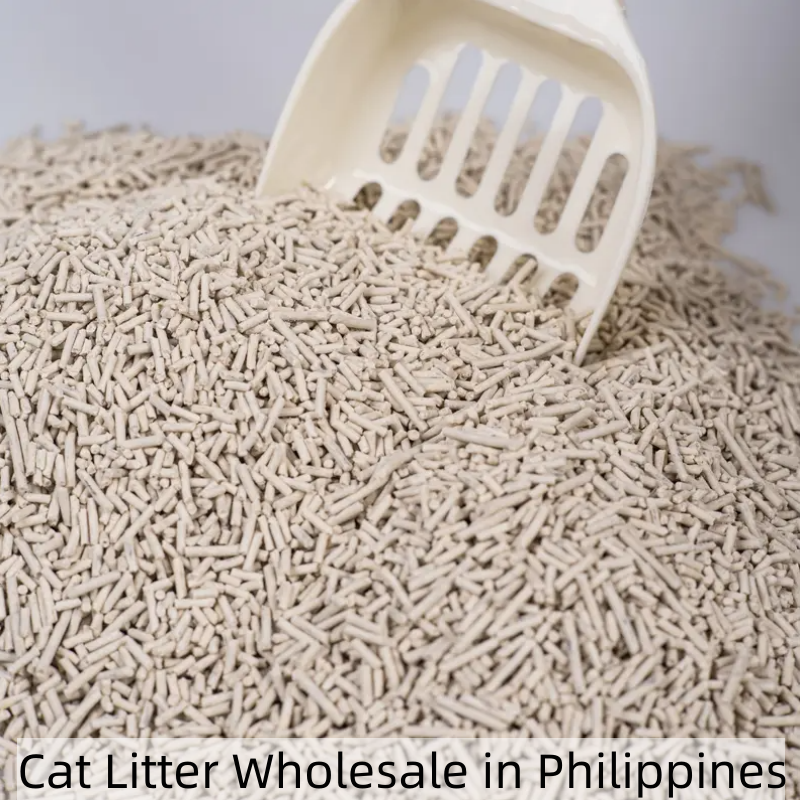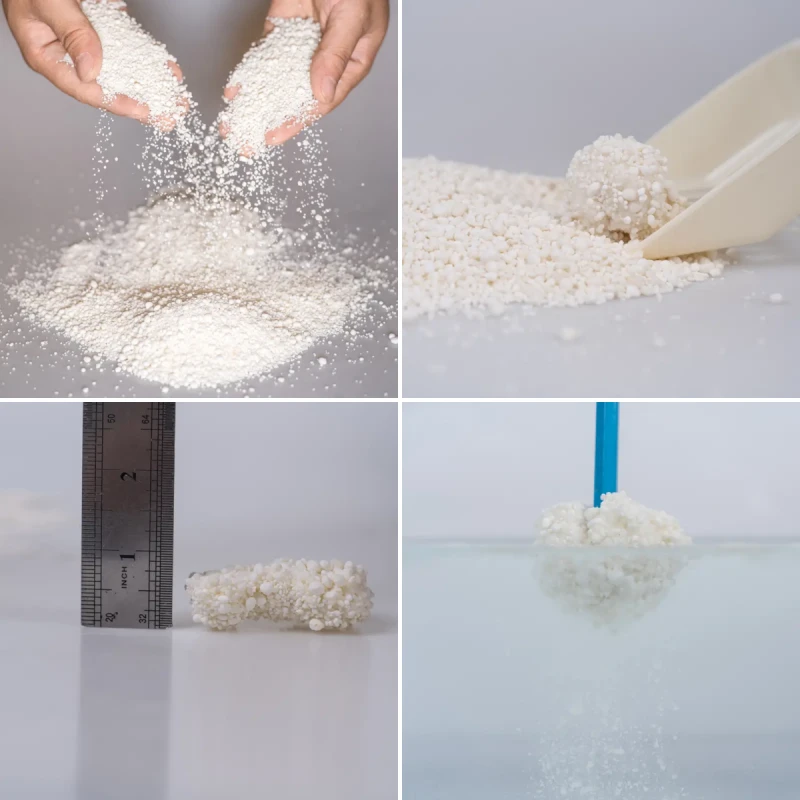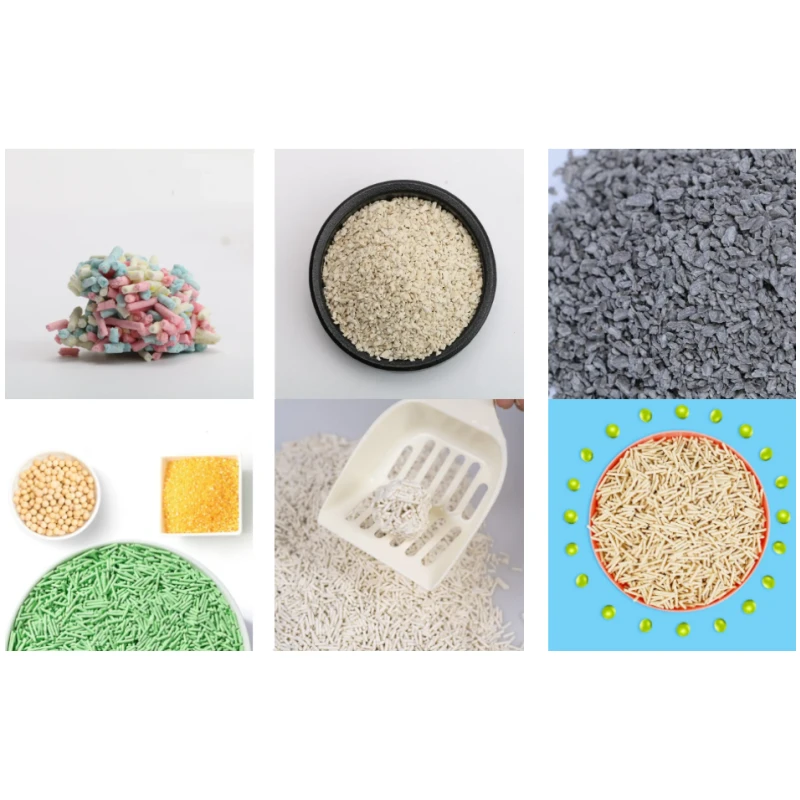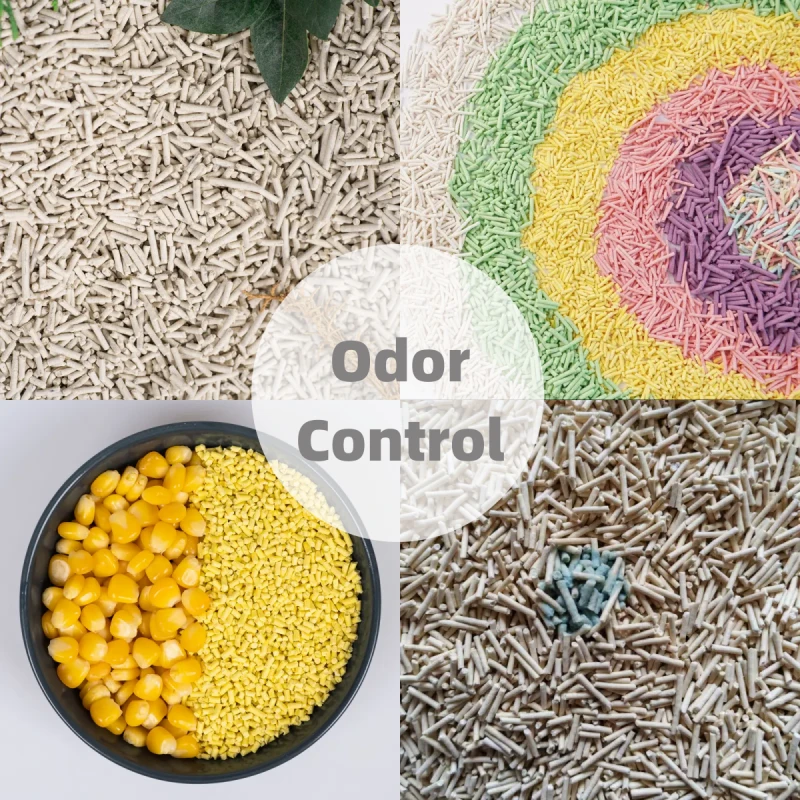Manufacturing steps
Raw material preparation
The first step in making corn cat litter is to prepare the raw materials. Usually, the raw materials of corn cat litter mainly come from by-products of corn processing, such as corn cobs or corn pellets. These corn by-products, typically provided by food processing plants or farms, might be considered waste under normal circumstances, but when it comes to making corn cat litter, they become extremely valuable.
processing and handling
Once the corn by-product is obtained, the next step is to process it into pellets or powder suitable for making cat litter. This usually involves grinding the corn by-product to create the right particle size and texture. During processing, some natural binders or water-absorbing agents may be added to help the cat litter form strong clumps and improve water-absorbing properties.
Forming and drying
The processed corn cat litter raw materials are sent to the molding machine for molding. This can produce cat litter particles of different shapes and sizes to meet different needs. Once formed, the cat litter needs to go through a drying process to remove excess moisture and ensure it has proper absorbency and clumping properties.
Screening and packaging
The dried corn cat litter needs to be screened to remove impurities and defective products. Qualified cat litter is then packaged into appropriate packaging specifications. During the packaging process, environmentally friendly packaging materials are usually selected, and product information and instructions for use are marked for the convenience of consumers.
Environmental protection and innovation
The process of making corn cat litter embodies the combination of environmental protection and innovation. First of all, using corn by-products as raw materials reduces the waste of resources and realizes the reuse of resources. Secondly, the use of natural raw materials and reduction of chemical additives reduces the impact on the environment and pet health. In addition, optimizing production processes and saving energy and resources can also help reduce negative impacts on the environment.
In the process of manufacturing corn cat litter, you need to pay attention to the following points to ensure the quality and environmental protection of the product:
Use natural raw materials: Choose high-quality corn by-products as raw materials to ensure the environmental protection and safety of the product.
Reduce chemical additives: Minimize the addition of chemically synthesized ingredients, such as artificial flavors or dyes, to cat litter to reduce the impact on the environment and pet health.
Save energy and resources: optimize production processes, minimize energy consumption and waste generation, and achieve effective use of resources.
Through reasonable production technology and strict quality management, high-quality corn cat litter is manufactured, which can not only meet market demand, but also protect the environment and promote sustainable development.
In the process of manufacturing corn cat litter, the concept of environmental protection and innovative spirit are fully reflected, injecting new vitality and possibility into the pet products industry. Through continuous exploration and improvement, the corn cat litter manufacturing industry will continue to contribute to environmental protection and sustainable development.
Revealing the main ingredients of corn cat litter
Corn cat litter is an environmentally friendly cat litter favored by cat owners. What are its main ingredients? This is a question that concerns many people. This article will delve into the main ingredients and characteristics of corn cat litter, and give you a glimpse into the secrets of manufacturing this environmentally friendly cat litter.
Corn by-products: main raw materials
One of the main ingredients in corn cat litter is corn by-products, which often include corn cobs or corn pellets. These by-products are produced during corn processing and are often considered waste. However, in the process of making corn cat litter, these by-products become extremely valuable.
The benefits of using corn by-products are twofold. First, they realize the reuse of resources and reduce the burden on the environment. Secondly, these natural raw materials have a good effect on the water absorption and clumping of cat litter, making corn cat litter an efficient cat litter choice.
Natural binders: increase clumping properties
In order for corn litter to form strong clumps, some natural binders are usually added. These adhesives are usually derived from natural plants or plant extracts, such as vegetable gums. Their addition can effectively enhance the clumping properties of cat litter, making it easier to clean and use.
Compared with the chemical additives in traditional mineral cat litter, the natural binders in corn cat litter are more environmentally friendly, reducing potential harm to the environment and pet health.
Other natural ingredients: perfect product properties
In addition to corn by-products and natural binders, corn cat litter may also contain some other natural ingredients, such as plant fibers. These ingredients are designed to further improve the water absorption, clumping and excrement adsorption properties of the cat litter, thereby improving product performance and user experience.
To sum up, the main ingredients of corn cat litter include corn by-products, natural binders and other natural ingredients. By utilizing these natural raw materials, corn cat litter not only has good environmental protection, but also provides high-quality water absorption and clumping properties, providing cat owners with a safe and effective cat litter choice.
Environmental protection analysis of corn cat litter: exploring the future of green pet products
In today's society, people's increasing awareness of environmental protection is not only reflected in all aspects of life, but also extends to the choice of pet products. As pet owners, we not only care about our own health and the protection of the environment, but we also value the well-being of our beloved pets and the sustainability of our living environment. Against this background, corn cat litter, a pet product considered environmentally friendly, has gradually attracted people's attention. This article will analyze the environmental protection of corn cat litter and explore its status and future development in the green pet products market.
Ingredients of corn cat litter
The main ingredient of corn cat litter is corn by-products, usually corn cobs or corn pellets. These corn by-products are produced during conventional farming or food processing and are natural plant materials that require no additional mining or processing, thus having a low environmental impact. Compared with traditional mineral cat litter, the manufacturing process of corn cat litter does not involve excessive exploitation of natural resources, so it has certain environmental advantages in raw material selection.
Biodegradability
Corn cat litter is well biodegradable, which is another important reason why it is considered environmentally friendly. Corn by-products themselves are natural plant materials, and after proper treatment, corn cat litter can gradually decompose under natural conditions. In contrast, traditional mineral cat litter is typically made from non-degradable quartz or clay, which can cause long-term environmental pollution when discarded.
No chemical additives
In order to improve water absorption and clumping properties, corn cat litter usually does not require the addition of chemically synthesized ingredients. Corn itself has natural water absorption, and some natural binders, such as plant fibers, may be added during the manufacturing process to help form agglomerates. In contrast, traditional mineral cat litter often contains chemical additives such as silica gel, which may not only pollute the environment but also pose potential risks to the health of pets.
Energy consumption and waste disposal
Corn cat litter typically requires a certain amount of energy and resources during the manufacturing process, including energy consumption during processing and drying, and handling during waste disposal. However, the manufacturing process of corn cat litter is generally less energy-intensive than traditional mineral cat litter because its main raw materials come from by-products of agricultural crops rather than through mineral mining.
To sum up, corn cat litter has good environmental protection. Its main raw materials are natural plant materials, which are biodegradable and have low chemical additive content. Although a certain amount of energy and resources will still be consumed in the production process, corn cat litter has obvious environmental advantages over traditional mineral cat litter. Therefore, as a pet owner, choosing corn cat litter can not only provide a safer and healthier living environment for pets, but also contribute to environmental protection and sustainable development, and promote the development and growth of the green pet products market.



387.webp)
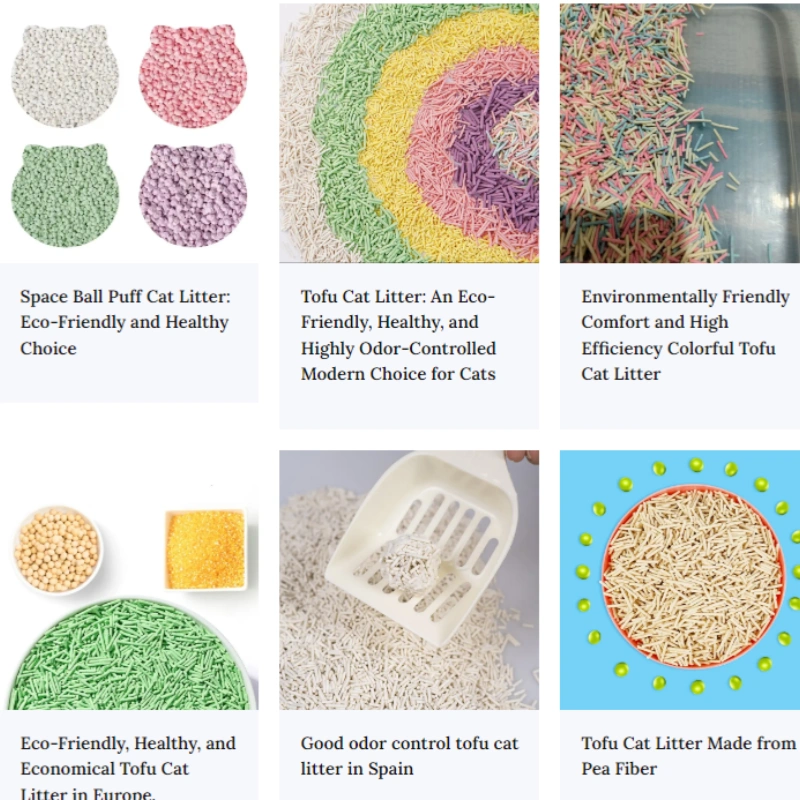
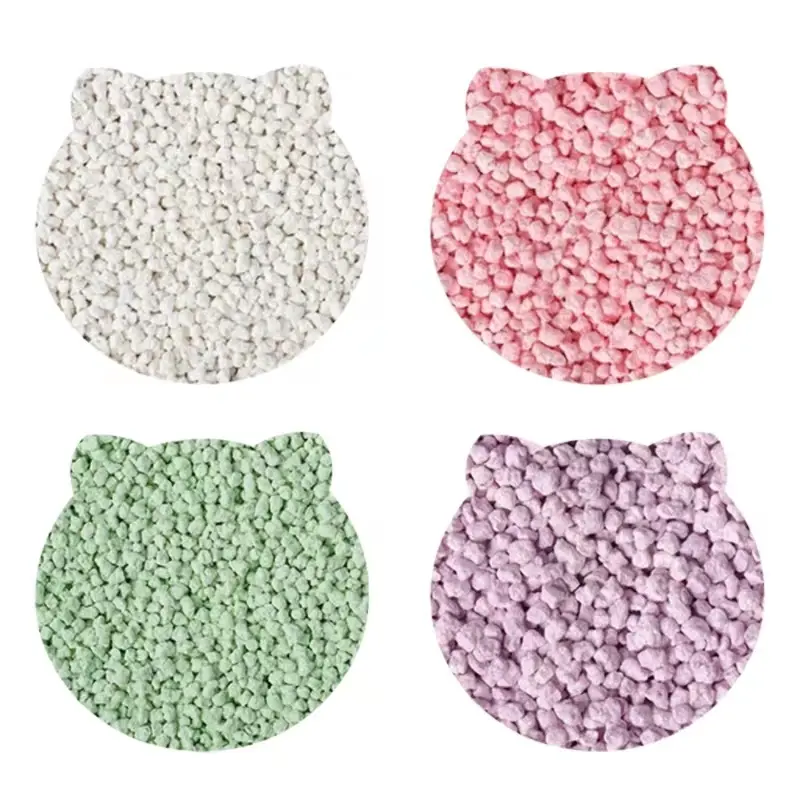
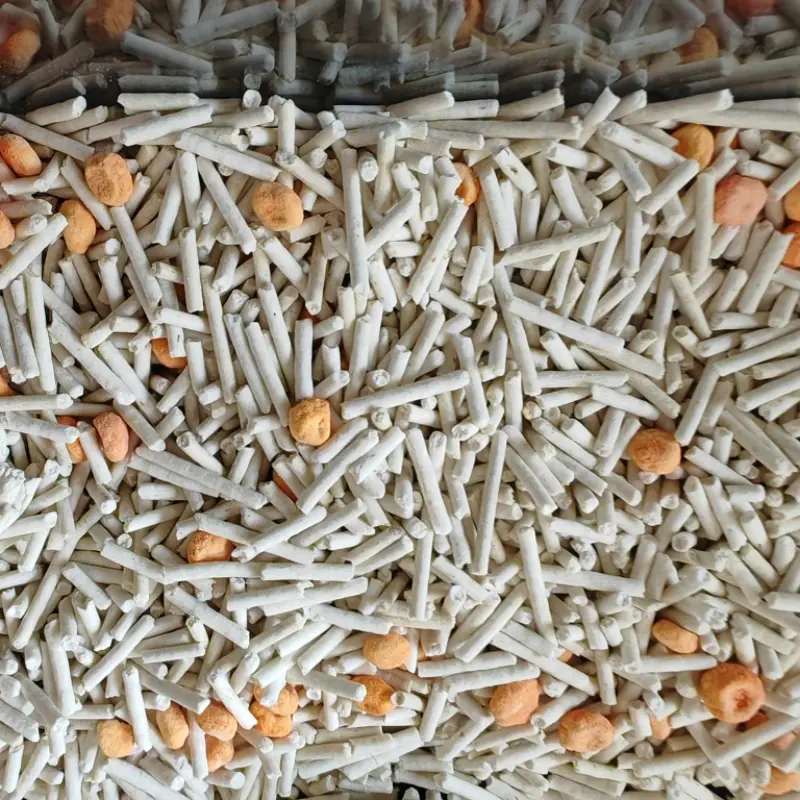
122.webp)
